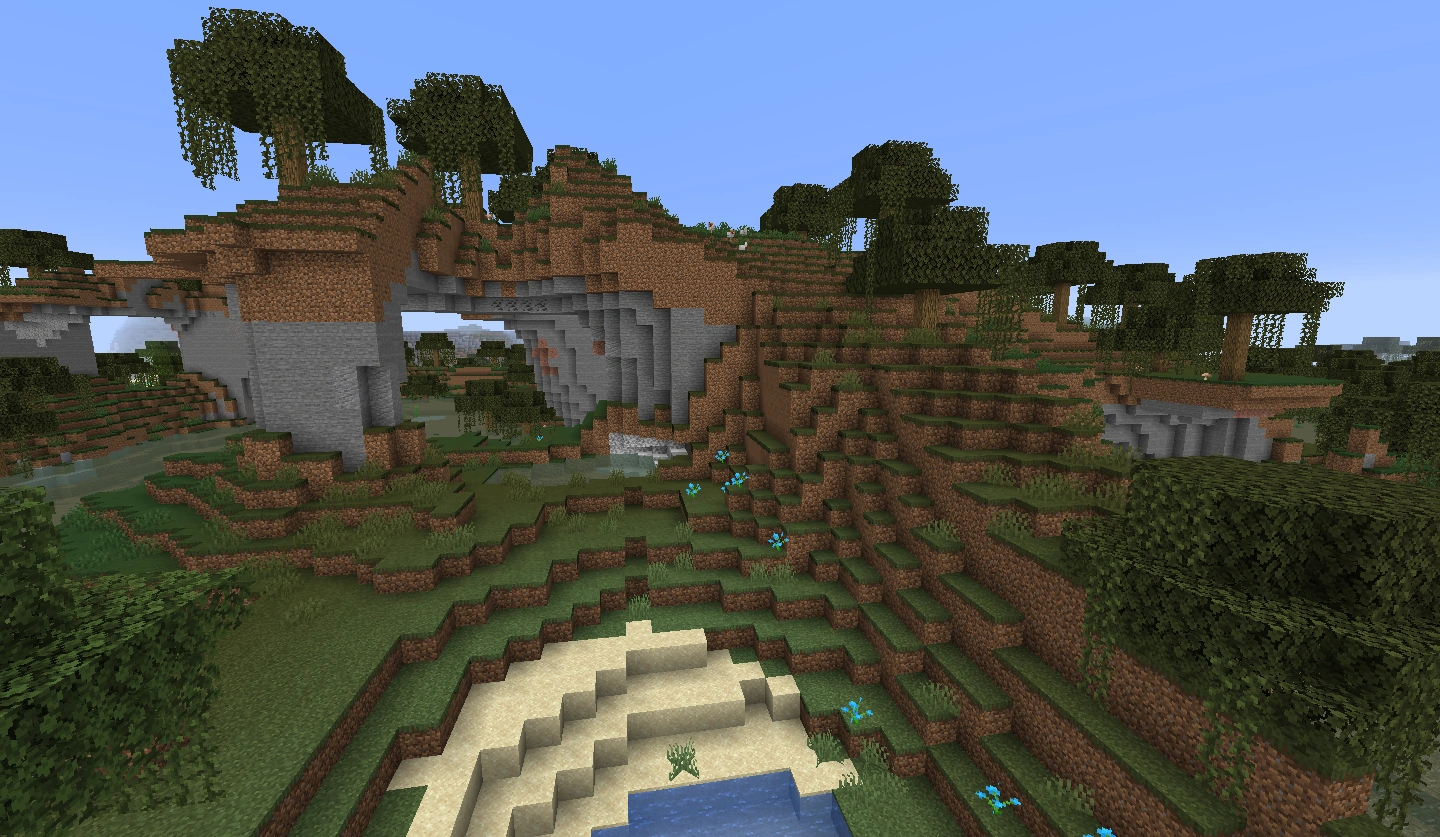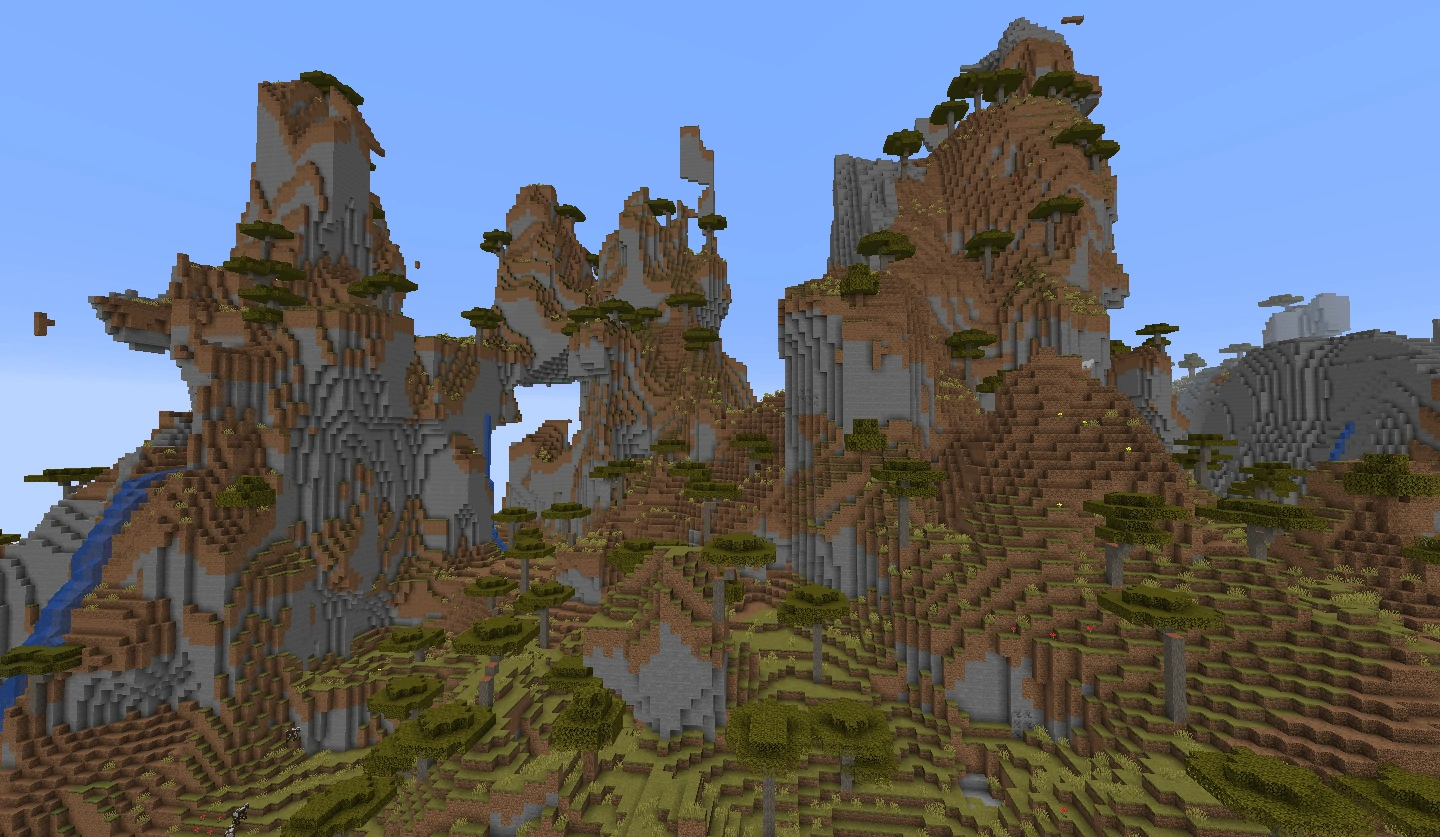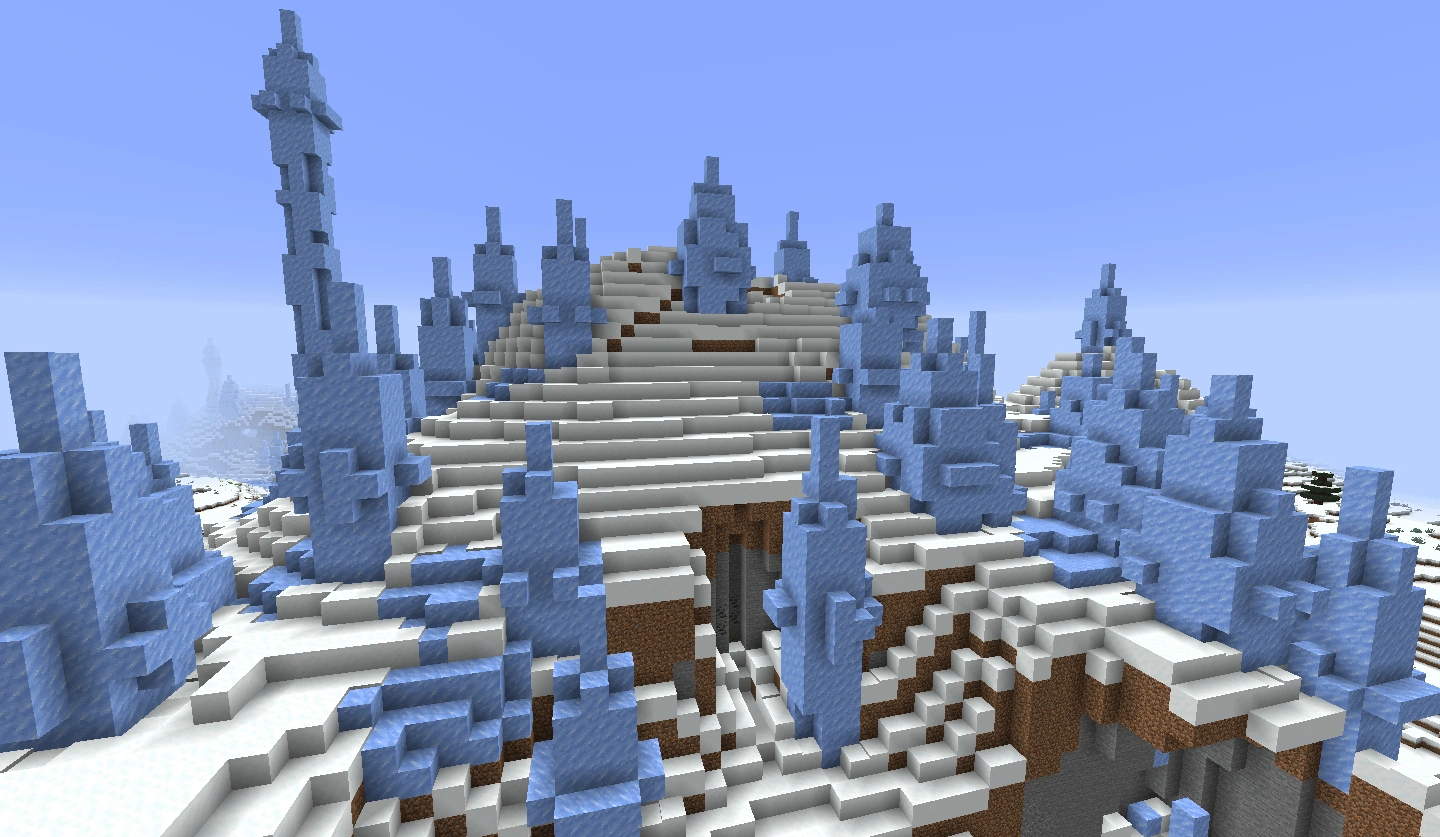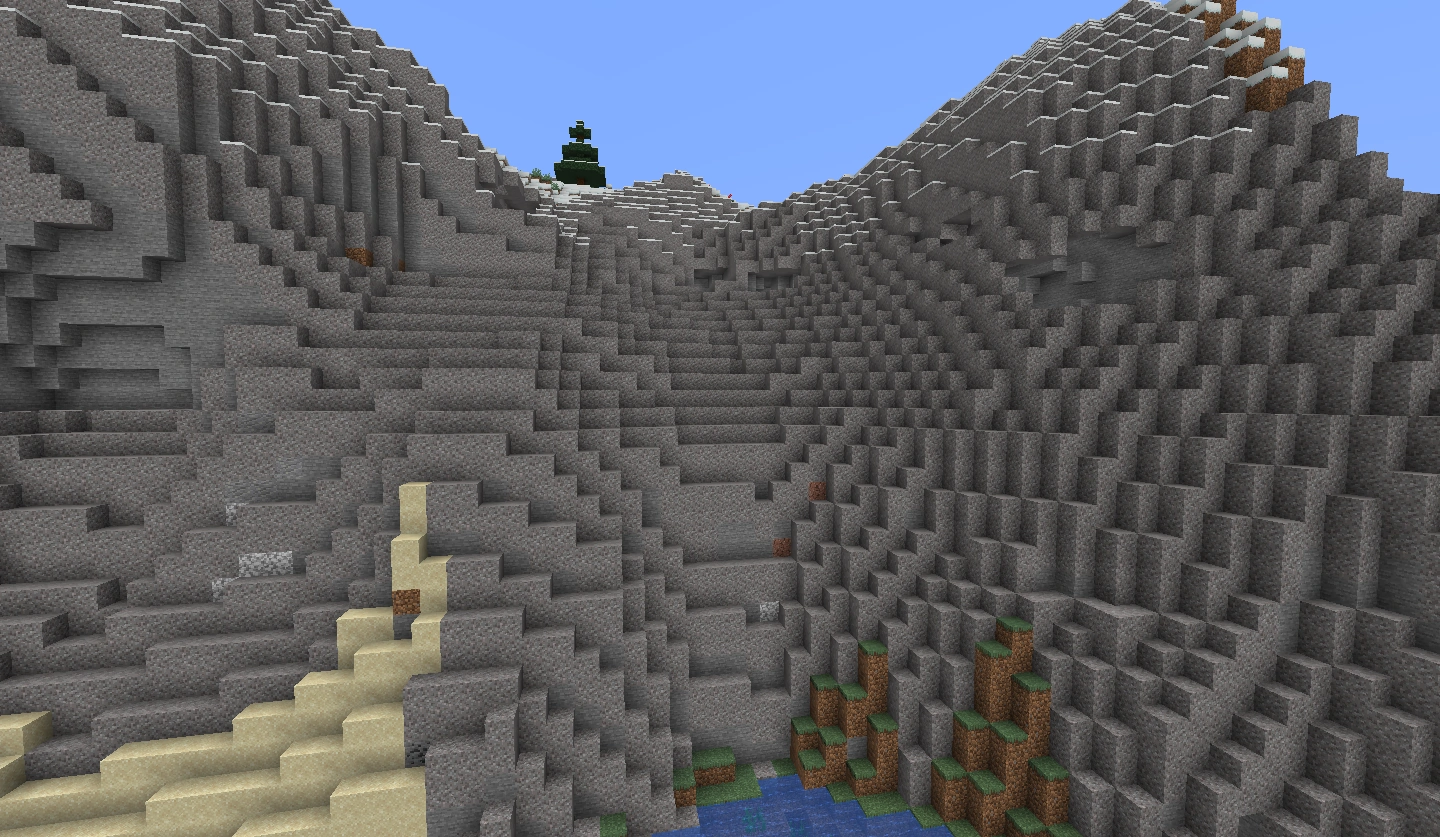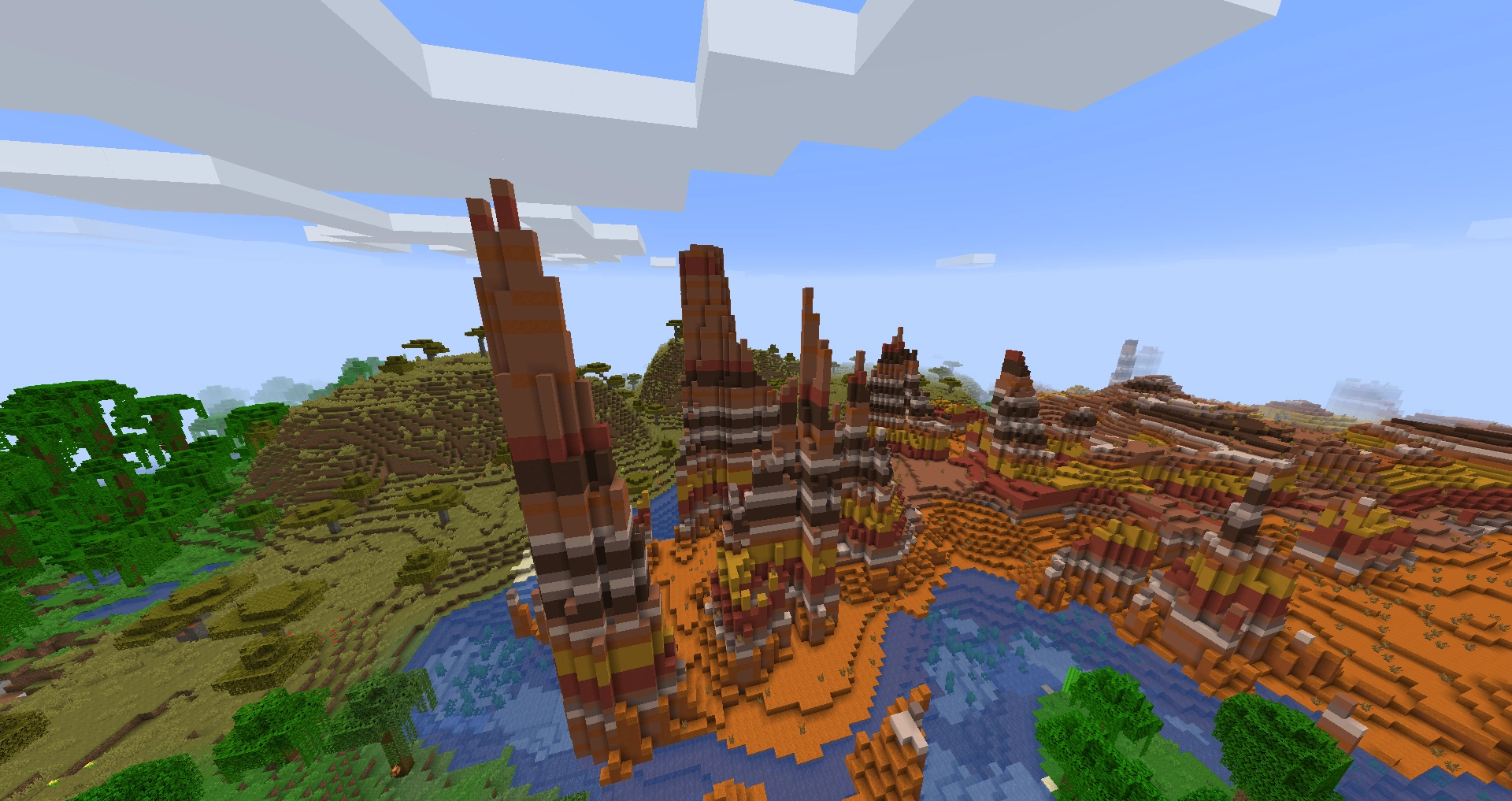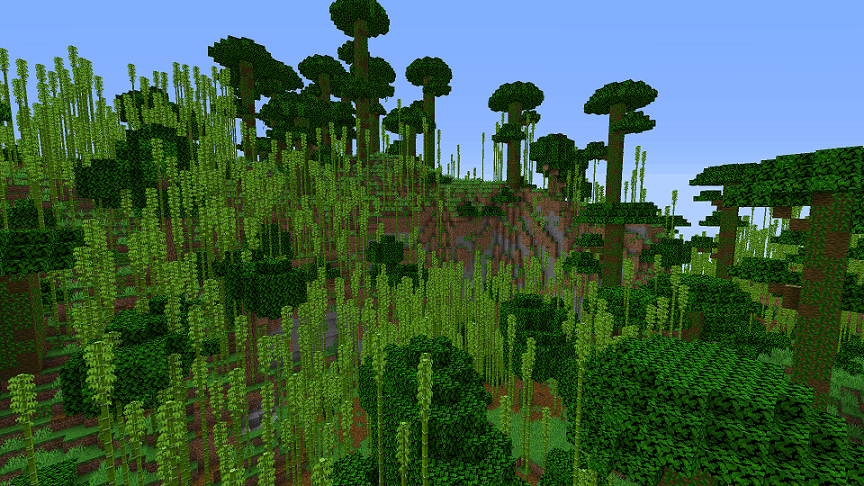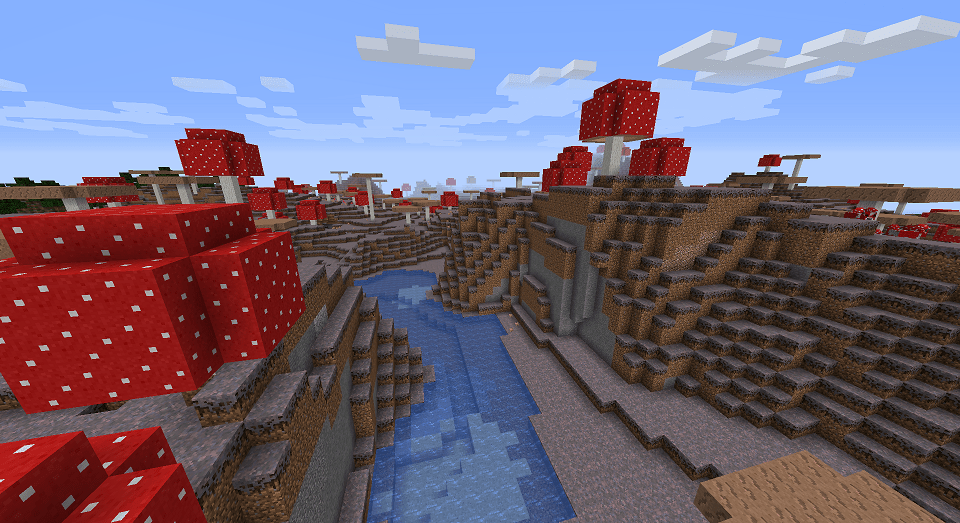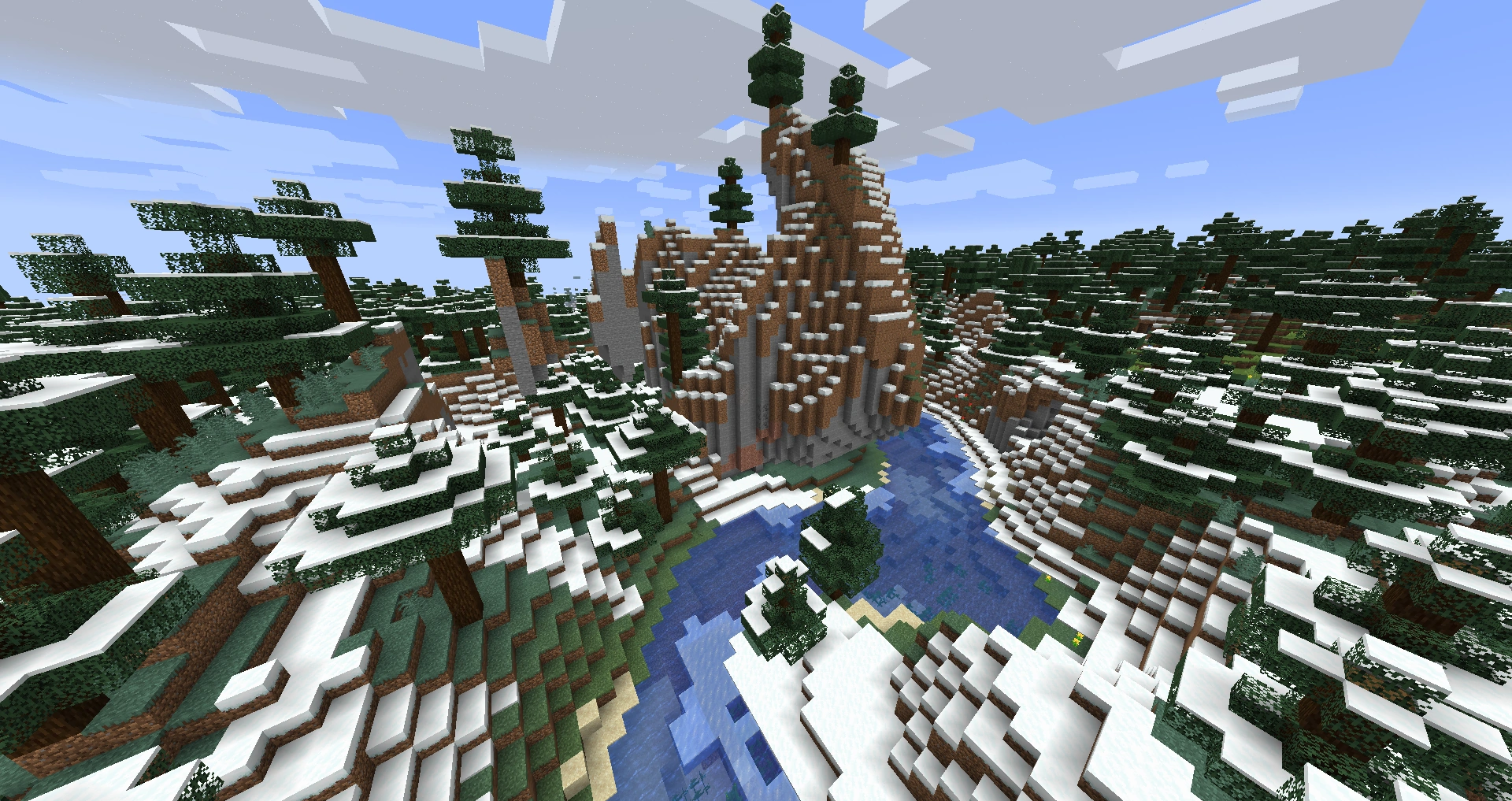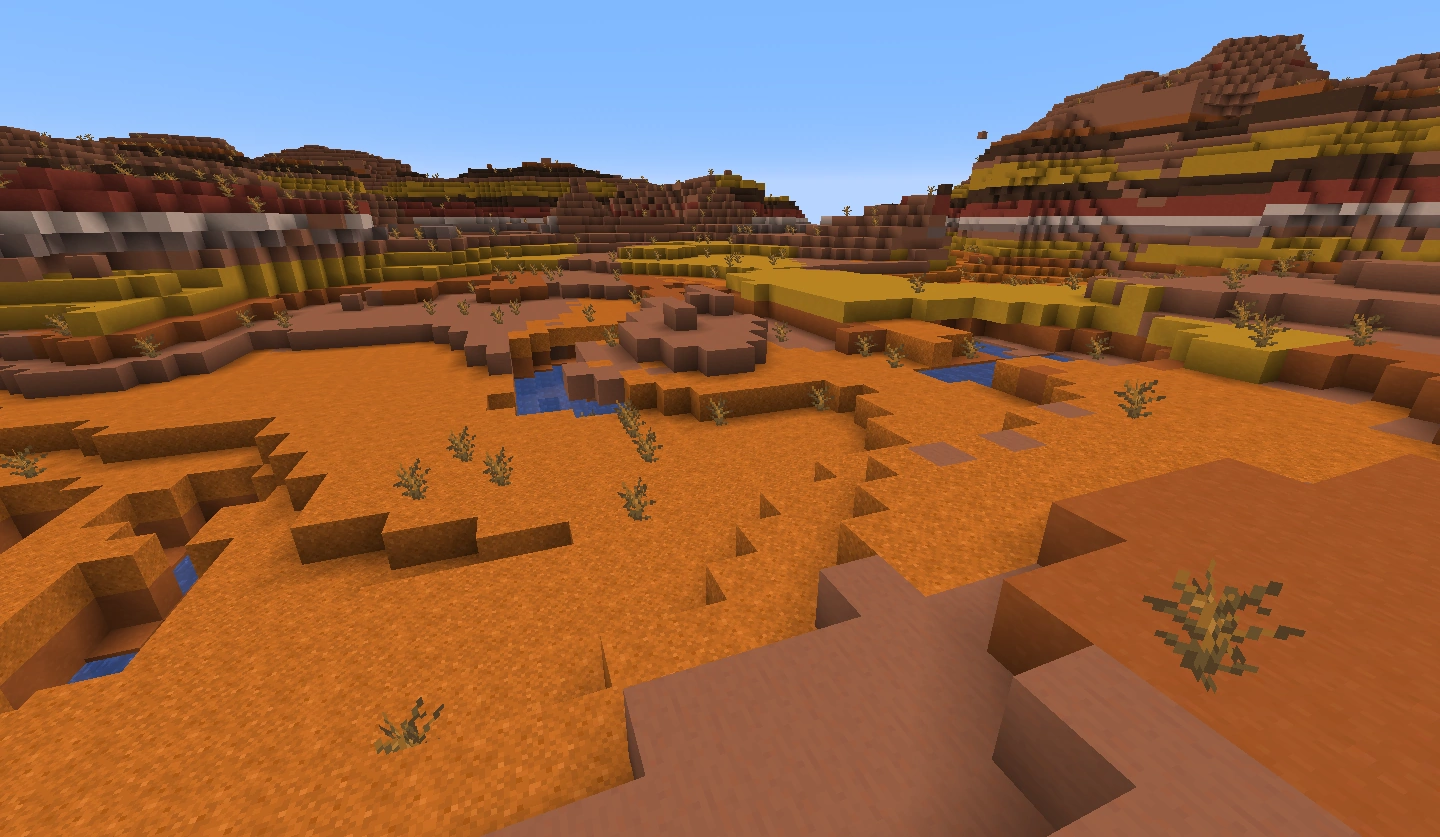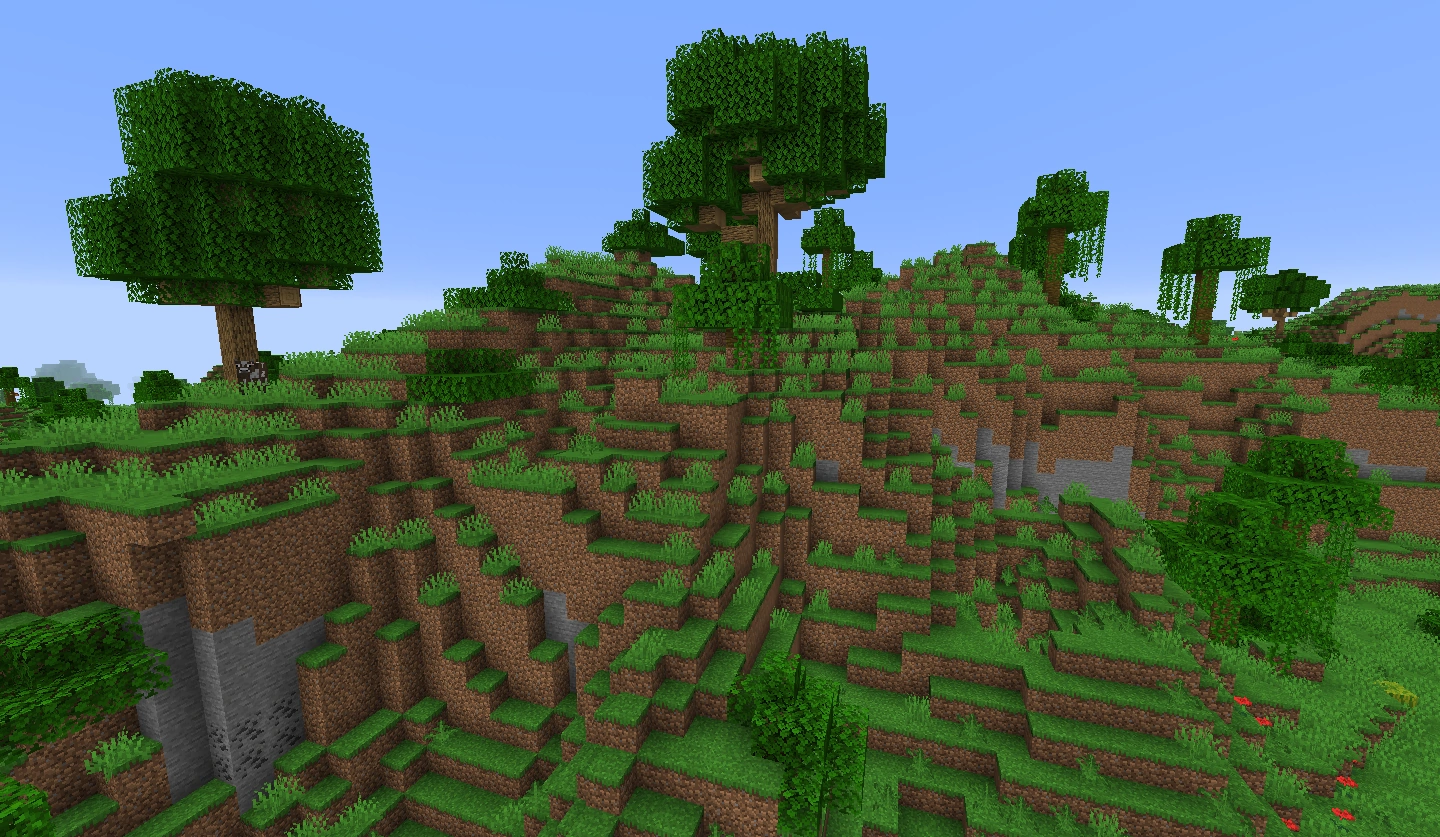Biomes are the different regions found throughout Minecraft and they borrow elements from their real world counterparts. In Java Edition, there are 79 biomes (67 Overworld biomes, 5 Nether biomes, 5 End biomes, and 2 unused biomes) and in Bedrock, there are 75 biomes (66 Overworld biomes, 5 Nether biomes, 1 End biome, and 3 unused biomes). While most of these biomes are common or uncommon, there are several that are rare and hardly generate in a game.
This list contains some of the rarest biomes in the Overworld. With the exception of the top four rarest biomes, the rest of the biomes on this list were arranged in alphabetical order as there isn’t official numerical data regarding how often these biomes generate. However, some avid Minecraft players, like Reddit user u/Ecl1psed or Data Dude on YouTube, have tried to run their own tests to see how often different biomes spawn.
As of October 2020, the information on this list is as accurate as possible and will be updated as needed.
- Swamp Hills
- Shattered Savanna and Shattered Savanna Plateau
- Ice Spikes
- Gravelly Mountains and Gravelly Mountains+
- Giant Tree Taiga and All Variants
- Eroded Badlands
- Bamboo Jungle and Bamboo Jungle Hills
- Mushroom Fields and Mushroom Field Shore
- Snowy Taiga Mountains
- Modified Badlands Plateau
- Modified Jungle Edge
Type: Medium/Mild
Temperature: 0.8, but varies within swamp
Blocks: Grass Block, Water, Lily Pad, Clay, Vines, Oak Log, Oak Leaves, Blue Orchid, and Mushrooms

photo source: Official Minecraft Wiki
Swamp Hills are the rare variant of the Swamp biome and has hillier terrain than the regular Swamp. The hills in the Swamp Hills tend to be much smaller/shorter than in other hill biomes. Also, flooded areas in the Swamp Hills have lower depths than the rest of the Swamp and are sometimes deep enough to have a Gravel floor in place of a Dirt floor, like normal Oceans. If a Swamp Hill is next to a Jungle, there is a chance that a Modified Jungle Edge can generate, which is the rarest biome.
Did You Know?
In Java Edition, Swamp Huts do not generate in Swamp Hills like they do in the regular Swamp biome.
Type: Dry/Warm
Temperature: 1.1
Blocks: Block, Coarse Dirt, Stone, Tall Grass, Acacia Log, Acacia Leaves, Oak Log, and Oak Leaves

photo source: Official Minecraft
The Shattered Savanna and Shattered Savanna Plateau are rare variants of the common Savanna biome. Unlike the calm, mostly flat terrain of the regular Savanna biome, the Shattered Savanna has a more chaotic look. This biome features extremely steep and erratic mountains, Coarse Dirt patches, bright green patches, and Stone patches. Shattered Savannas also have enormous overhangs, floating islands, and huge waterfalls and lavafalls, with higher and rougher terrain than even the Mountains biome.
The Shattered Savanna Plateau is almost identical to the regular Shattered Savanna, but is gentler. However, both the regular Shattered Savanna and Shattered Savanna Plateau are dangerous places to explore because of how high and sharp the cliffs are.
Did You Know?
Shattered Savannas typically have enormous deep lakes that form on the bases of the mountains – Shattered Savanna Plateaus do not share this feature.
Type: Snowy/Icy
Temperature: 0.0
Blocks: Packed Ice, Snow Block, Snow, Dirt, and Ice

photo source: Official Minecraft Wiki
Ice Spikes are a rare variation of the Snowy Tundra biome and feature large spikes of Packed Ice and glaciers. Before the Update Aquatic, Ice Spikes were the only biome where Packed Ice could be found. The Ice Spikes come in two different sizes: short, wide spikes; and tall, thin spikes. Usually, the spikes are 10 to 20 blocks tall, but the taller, thinner spikes can reach over 50 blocks in height.
Did You Know?
Like the regular Snowy Tundra, the only animal mobs that spawn in the Ice Spikes are polar bears and rabbits.
Type: Cold
Temperature: 0.2
Blocks: Gravel, Grass Block, Snow, Stone, Emerald Ore, Infested Stone

photo source: Official Minecraft Wiki
While Mountains and two of its other variants are common, Gravelly Mountains and Gravelly Mountains+ are rare. The top few layers of Gravelly Mountains feature Gravel instead of Stone and Grass. Since these Mountain variants have less grass, trees spawn less often.
Gravelly Mountains+ are nearly identical to the regular Gravelly Mountains biome. However, Gravelly Mountains+ feature much taller peaks, similar in height to those in the Wooded Mountains. This biome typically generates as a standalone biome when a Desert Lake is bordered by a Snowy biome.
Did You Know?
Players should be careful when digging underground in Gravelly Mountains because the top layers of Gravel can cause suffocation.
Type: Cold
Temperature: 0.3
Blocks: Grass Block, Podzol, Coarse Dirt, Mossy Cobblestone, Spruce Log, Spruce Leaves, Fern, Large Ferns, Dead Bush, Sweet Berry Bush, and Mushrooms

photo source: Official Minecraft Wiki
The Giant Tree Taiga and all of its variants (Giant Tree Taiga Hills, Giant Spruce Taiga, and Giant Spruce Taiga Hills) are rare cold biomes. These biomes tend to be large and are home to extremely tall Spruce trees. Giant Tree Taigas usually border Jungles, Taigas, and sometimes Snowy biomes.
The difference between the regular and hills Giant Tree Taiga Biomes and the Giant Spruce Taiga biomes is that the Spruce trees in the Giant Spruce biomes have more leaves. Since there are more leaves, the chances of saplings dropping when these trees are cut down are increased, which makes it a sustainable place to harvest Spruce wood.
Did You Know?
Although the Giant Tree Taiga and its variants are cold biomes, it rarely snows naturally in these areas because the snowfall line is so high up at above Y=150 (blocks high); in the Giant Spruce Taiga, the snowfall forms at Y=120.
Type: Dry/Warm
Temperature: 2.0
Blocks: Red Sand, Terracotta, Cactus, Dead Bush, Gold Ore

photo source: Official Minecraft Wiki
Eroded Badlands are another rare variation of the Badlands. This biome unique formations of tall thin spires of terracotta that rise out of the floor of the canyon. Deserts do not generate alongside of Eroded Badlands biomes. In Bedrock Edition, passive mobs – Pigs, Sheep, Chickens, Cows, and Bats – spawn in the Eroded Badlands.
Did You Know?
The terracotta formations in the Eroded Badlands are called hoodoos and the biome is modeled after Bryce Canyon in Utah, USA, which also features beautiful hoodoos.
Type: Medium/Lush
Temperature: 0.95
Blocks: Grass Block, Podzol, Bamboo, Vines, Jungle Log, Jungle Leaves, Oak Log, Oak Leaves, and Melon

photo source: Official Minecraft Wiki
As its name suggests, the Bamboo Jungle is a Jungle variant that is covered in numerous bamboo plants. Besides the Giant Tree Taiga and its variants, the Bamboo Jungle and Bamboo Jungle Hills are the only place to find Podzol (a special dirt-type block). All jungle-exlusive mobs – pandas, parrots, and ocelots – spawn in Bamboo Jungles and Bamboo Jungle Hills. In Java Edition, Jungle Pyramids have chance of generating in both Bamboo Jungle types.
Did You Know?
Pandas have a higher spawn rate in Bamboo Jungles (80/160 spawn chance) and Bamboo Jungle Hills (80/130).
Type: Medium/Lush
Temperature: 0.9
Blocks: Mycelium, Mushroom Blocks, and Mushrooms

photo source: Official Minecraft Wiki
Mushroom Fields are the rarest non-variant biome in the game. Typically Mushroom biomes generate as an island surrounded by the ocean, but they sometimes appear touching land on one side. On incredibly rare occasions, Mushroom Fields can be completely landlocked, but this is even rarer than the Modified Jungle Edge. Mushroom Fields are the only biome where Mooshrooms (mushroom-covered cows) spawn naturally.
Mushroom Field Shore is the only Mushroom Fields variant and is a technical biome. It generates when a river cuts through it as well as when it borders an ocean. The only difference between the Mushroom Field Shore and regular Mushroom Fields is that the variant is much flatter and shallower in elevation. Also, Buried Treasure and Shipwrecks can sometimes generate on Mushroom Field Shores.
Did You Know?
Mushroom Fields are one of the safest biomes because the usual night-time hostile mobs (creepers, skeletons, zombies, etc.) do not spawn here even in caves, mineshafts, and other dark structures.
Type: Snowy/Icy
Temperature: -0.5
Blocks: Grass Block, Snow, Grass, Fern, Sweet Berry Bush, Large Fern, Spruce Log, Spruce Leaves

photo source: Official Minecraft Wiki
Although the Snowy Taiga Mountains don’t have a special rarity, according to the Official Minecraft Wiki, it is the third rarest biome behind the Modified Jungle Edge and Modified Badlands Plateau. Compared to the regular Taiga Mountains, the mountains found in the Snowy Taiga Mountains are higher, steeper, and more erratic. This makes the Snowy Taiga Mountains quite dangerous to navigate.
Did You Know?
Unlike the regular Snowy Taiga variant, igloos, villages, and outposts do not spawn in the Snowy Taiga Mountains biome.
Type: Dry/Warm
Temperature: 2.0
Blocks: Red Sand, Terracotta, Cactus, Dead Bush, and Gold Ore

photo source: Official Minecraft Wiki
Modified Badlands Plateau is the second rarest biome in the Minecraft overworld and the only biome deemed “very rare.” This modified biome features smaller plateaus and harsher terrain than the regular Badlands Plateau. As with other Badlands biomes, Mineshafts can sometimes generate in the Modified Badlands Plateau.
Did You Know?
The look and layout of the Modified Badlands Plateau mimics large plateaus in the real world that have weathered more over time.
Type: Medium/Lush
Temperature: 0.95
Blocks: Grass Block, Vines, Jungle Log, Jungle Leaves, Cocoa, Oak Log, Oak Leaves, and Melon

photo source: Official Minecraft Wiki
Modified Jungle Edge is currently the rarest biome in Minecraft and the only one with the “extremely rare” label. This biome is so rare because it will only generate under very strict conditions. In order for a Modified Jungle Edge to appear, a Swamp Hills biome – which is also fairly rare – must spawn right outside the edge of a Jungle. Modified jungle edges cover only a few millionths (0.00027%) of the overworld by area.
Did You Know?
Since Modified Jungle Edges are so rare, they are typically very small at only a few hundred blocks in length and in some cases fewer than 10 blocks.

